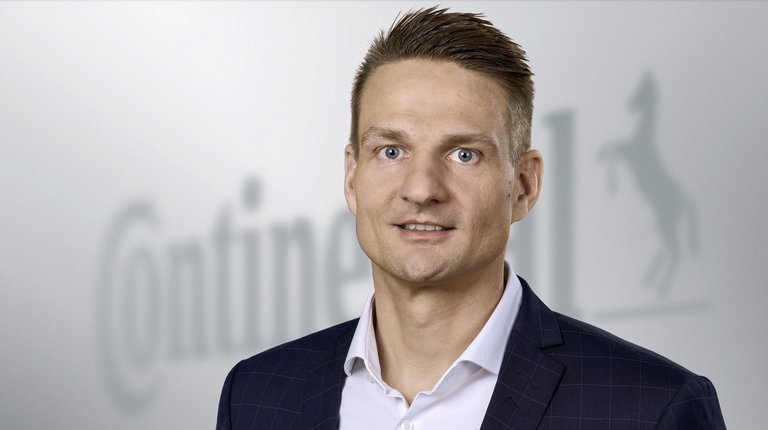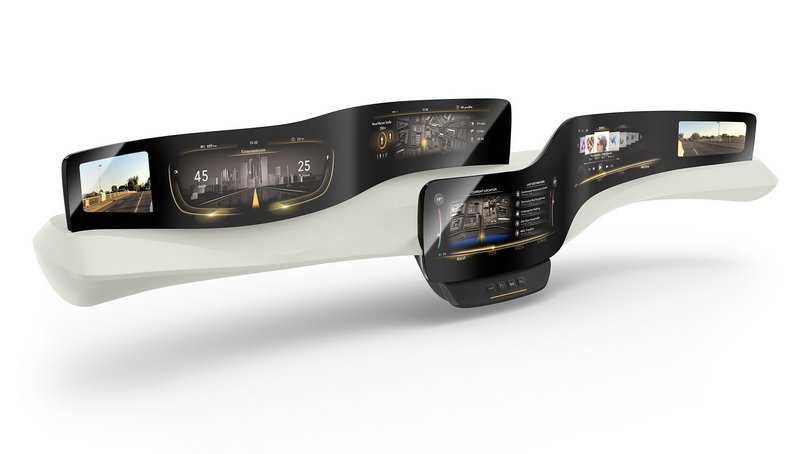Buttons from nothing: Continental exhibits functional surfaces for the driver’s cab of the future
- 3D-operating elements Morphing Controls only become visible as needed
- As few buttons as possible, as much function as necessary: simple operation thanks to proximity sensors, force sensing, and tactile feedback
- Continental will present Morphing Controls for the first time at its 300-year anniversary at the Vinnhorst site
Hanover/Babenhausen, June 7, 2018. A look at the future of the automobile: Illuminated buttons stand out against the elegant surface of a dashboard, as soon as the hand of the driver nears the surface. Where smooth artificial leather created a tidy, sophisticated look just a moment ago, three-dimensional buttons now light up. Once the driver has successfully used the one he wants, he feels a brief pulse as confirmation. As soon as he pulls his hand away, the buttons disappear once more without a trace behind the surface. With these “Morphing Controls” (operating elements that take shape), the technology company Continental meets a previously often contradictory demand in vehicle interiors for man-machine interaction: making as many functions as possible easily usable with as few buttons as possible.
Technical highlight of the surface technology
“Thanks to surfaces that change, Morphing Controls make various functions usable, depending upon need and driving situation. This allows us to greatly reduce driver distraction. The minimalist dashboard looks harmonious, however, and offers full control at all times,” says Dr. Frank Rabe, the director of the Continental business unit Instrumentation & Driver HMI.
The stretchable and light-permeable Morphing Control material with the look and feel of premium artificial leather is a development of the surface specialists in the Continental group. Thanks to its minimal scattering effect, the film that is used permits a very precise and contour-precise portrayal of the illuminated symbols with simultaneously high illumination intensity and homogenous lighting. In its deactivated condition, both the symbols and the mechanical elements become wholly invisible and impalpable to the occupants.
There’s more behind the surface than meets the eye
Operating elements that only take shape as needed help to create integrated, harmonious driver‘s cabs. For this, a combination of material innovation, sensors, electronics, and electromechanics is necessary: proven, capacitive proximity sensors behind the surface of the dashboard recognize the human hand and then activate the buttons. These move themselves forward through the reversibly stretchable multilayer surface material. Because the material is light permeable, the function of the buttons can be shown by means of LED illumination. The driver’s finger pressure is measured, and a tactile signal is triggered when there is sufficient force – another proven principal in this series.
This gives the driver feedback, telling him that he has successfully activated the function. With this process, Morphing Controls can practically be operated while blind. If the driver pulls his hand back, the buttons disappear behind the surface. All that remains is fine artificial leather and a homogenous surface from an ergonomic point of view, without any distractions.
300 years of tradition: from the “Wachstuchmacherey” to Morphing Controls
“Quiet surfaces in the vehicle interior cause little distraction for the eye. At the same time, operation is incredibly simple due to the proximity sensors, force recognition, and tactile feedback,” says Dr. Dirk Leiß, director of the Continental business unit Benecke-Hornschuch Surface Group. The first demonstrator for the new operating elements shows classic buttons. However, slide controllers can be just as easily implemented with the technology. “In addition, Morphing Controls are a modular concept, suitable for the door panelling or the headliner,” Leiß continues.
The Morphing Controls are one of the technical highlights of surface technology and will be presented to the broader public for the first time at the 300-year anniversary of the business unit at the Vinnhorst site (northern Hanover). The business unit for surface materials can be traced back to the year 1718, when the company was founded (Hanover). Founded at that time as a “Wachstuchmacherey”, the business unit evolved over the course of its 300-year history into a highly innovative specialist for surface materials in the automobile branch and industry. The milestone anniversary will now be celebrated under the motto “300 Years – Ideas Beyond Surfaces” in the Vinnhorst factory.

Sebastian Fillenberg
Head of External Communications
Continental Automotive

Sébastien Bonset
Media & PR Manager, Media Coordination APAC
ContiTech


